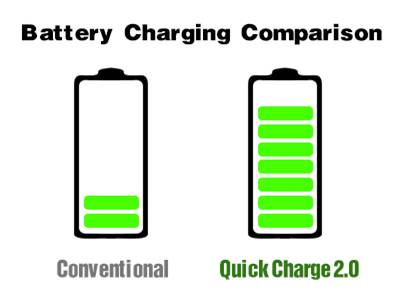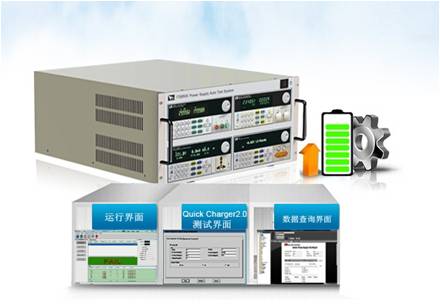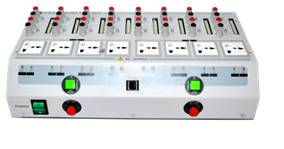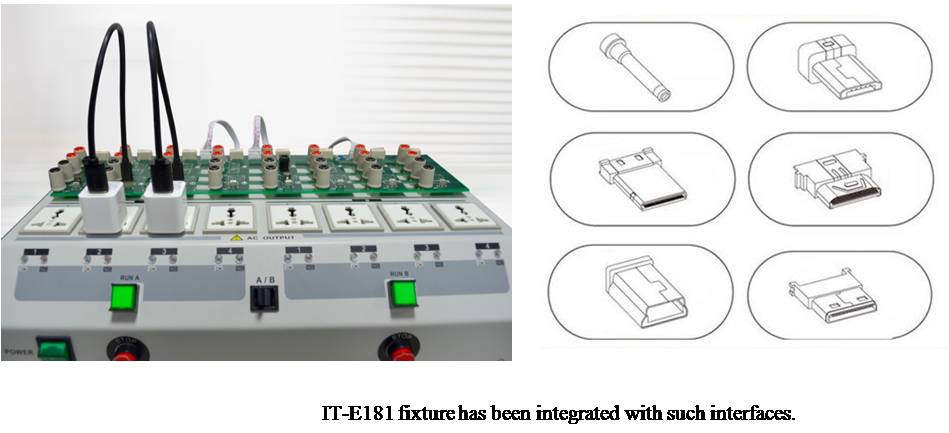Abstract:
In modern society, people are used to conveniences brought by mobile phones. In addition to comprehensive functions, people are also concerned about the cruising capacity. Manufacturers continuously increase the battery capacity to meet this requirement. However, the charging time becomes a new problem. Qualcomm implements new specifications based on Quick Charge 1.0 and launched the Quick Charge 2.0 technology (V2.0). Compared with Quick Charge 1.0, the charging speed of Quick Charge 2.0 (V2.0) is increased by 40%. Compared with the mobile phone and charger with no Quick Charge technology, the charging speed is increased by 75%.
Introduction
.jpg)
V2.0 has been promoted since 2013. By mid-2014, a number of commercial terminal products had been launched on the market. Undoubtedly, the quick charger has become the development trend of future mobile phones, tablet PCs and other electronic products. The end customers are most concerned about the safety of mobile phones and batteries with the charging speed increased and the perfect and systematic test platform for novel V2.0 quick charger products to verify the reliability and electrical performance of the quick charger.
To meet the industrial needs, ITECH Electronics rapidly put forward the test items applicable to Quick Charge 2.0 based on over 60 years of experience in the power supply field and apply them on the ITS9500 power supply test system to fully meet the test demands of users.
I. What is Quick Charger2.0?
To better understand and deal with the test process and method of the quick charger V2.0, we should know the principles of the Quick Charger2.0 and its differences and advantages, compared with the conventional charger and Quick Charger1.0.
The battery voltage of the normal mobile phone is 3V to 4.2V, and the output voltage of the power adapter is about 5V.
Most of the conventional mobile phones are charged in a linear manner, that is, the input current is equal to the output current.
Input power =5V* input current
Output power =3V* output current (input current=output current)
Therefore, the power loss is about 40%, which is the reason of heating of the mobile phone.
Quick Charger1.0: simply, the switching charge mode is applied.
Input power =5V* input current
Output power =3V* output current (input current=output current)
When the battery voltage is low, the charging current of the battery will increase to ensure that the input power is equal to the output power and increase the battery charging rate.
Quick charger2.0: the switching charge mode is applied. Compared with V1.0, V2.0 can provide three kinds of output voltage: 5V, 9V and 12V. V1.0 can only output the voltage 5V, and the charging speed is limited by the charging voltage. The quick charger V2.0 can provide the charging voltage and current at the same time. Due to the two-way mode, the charging speed is increased, and V2.0 has become a new trend of quick charging of mobile phones in the future.

II. Test Requirements of Quick charger2.0
The standard test specifications are provided in the charger industry, generally including the input characteristic, output characteristic, protective property and other electrical test items. The above indicators of the quick charger V2.0 should be tested.
The difference is that the novel quick charger V2.0 can provide three kinds of output voltage: 5V, 9V and 12V. To select the output voltage, a mechanism should be provided between the charger and mobile phone. The mobile phone should be capable of identifying whether the power adapter supports the quick charge mode. Then the output voltage should be dynamically adjusted to be 9V or 12V with quick charging authorized to the mobile phone, to achieve the purpose of quick charging.
Therefore, the test system of the novel quick charger V2.0 should have the following functional features: (1) completely test the electrical properties of Quick charger2.0; (2) automatically identify whether the charger connected to the test system supports quick charging; and (3) simulate the protocol of Quick charger2.0 to adjust the specific output voltage of quick charging to obtain higher power input of the equipment battery.
(III) ITECH ITS9500 for Perfect System Solution of Quick Charger2.0
Based on the ITS9500 power supply test system platform and the test items of Quick Charger2.0, ITECH can realize the integrated and automated test of Quick Charger2.0. The system is compatible with the protocol of Quick Charger2.0 to send the instructions to dynamically adjust the output voltage (5V, 9V and 12V) of Quick Charger 2.0 and test the electrical properties under different kinds of output voltage.
The ITS9500 power supply test system has the following advantages:
 1. With the modular design and small size, the maintenance can be facilitated, and the maximum flexibility and scalability can be provided for the system architecture.
1. With the modular design and small size, the maintenance can be facilitated, and the maximum flexibility and scalability can be provided for the system architecture.
2. With more than 40 groups of test items, the electrical properties of the quick charger can be tested comprehensively.
3. It is compatible with the protocol of Quick Charger2.0, and the output voltage of the quick charger can be adjusted.
4. The test interface is simple, and no language programming knowledge is required.
5. It has the complete report analysis function and the company logo can be added.
6. Management permissions can be set at different levels.
7. It has the complete protection function to ensure the system reliability.
8. Provide the supporting test fixture to simplify the operation.
 For the test of quick chargers produced in batch, the ITS9500 test system can provide the supporting test fixture IT-E181 and IT-E182 (optional). With the connecting fixture, the wiring can be greatly simplified, and the testing efficiency of the production line can be increased to twice of that of the traditional test.
For the test of quick chargers produced in batch, the ITS9500 test system can provide the supporting test fixture IT-E181 and IT-E182 (optional). With the connecting fixture, the wiring can be greatly simplified, and the testing efficiency of the production line can be increased to twice of that of the traditional test.
For the traditional test system, the tested objects should be changed manually one by one in case of no fixture, and wiring should be done again, therefore, the operation is troublesome and the efficiency is low. However, the `panel of the test fixture IT-E181 of ITECH is equipped with various mobile phone charging interfaces, such as the mini USB male port (Type A plug), mini USB male port (Type B plug), etc. The user only needs to plug the mobile phone for quick charging, thereby simplifying the operation and saving the time.
Below is an example of testing 8 products. Assuming that troublesome wiring is negligible, the user needs to manually change eight times. If the time of changing one product is 5s, the total time required to change eight products is 40s. If the IT-E181 fixture is used, the user can connect four chargers at a time, and the required time is 20s. During testing of the first four products, the other four chargers can be connected, thereby saving 20s. Therefore, 20s can be saved for testing eight products in a group, and the efficiency is doubled. If N groups consisting of eight objects to be tested are tested within a day, the yield will change qualitatively and more benefits can be created.


